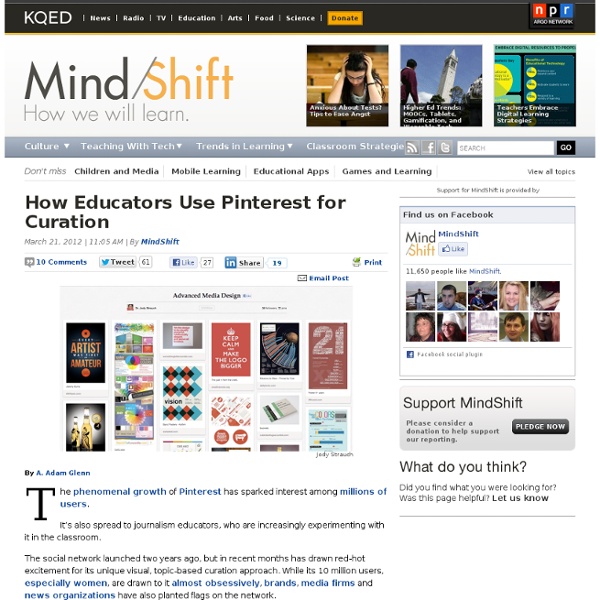How Educators Use Pinterest for Curation

curator's ǝpoɔ
Content Curation versus Content Aggregation: A Velvet Mr. T Painting
Two posts brought to my attention the discussion starting to take root about the worlds of content aggregation versus content curation. A post on the Poynter blog back in early October points to the work of journalists engaging in curation via Twitter as a way of “filtering the signal from the noise.” The phrase used was “curation is the new aggregation.” A more recent post on the Simple-talk.com blog by Roger Hart delves more into the world of content curation in a broader sense, stating that it is a bit of a flavor-of-the-month. My experience with curation is more specific. Daily, and sometimes twice daily, it is my job to draw from a set pool of content, radio programs’ arts and entertainment segments, and publish them into a CMS with text and audio. Over the past few years, publishing content in this manner makes me a curator of sorts. Curation goes one step beyond aggregation by adding an active, ongoing editorial component. Curation and aggregation are similar in but a few ways. So.
40 Social Media Curation Sites and Tools
Last month I shared 40+ networks that you could consider depending on your niche or interests. As part of my commitment to this community, I shared that I will expand on this list throughout 2012. So here is the first addition to that build! The topic- Curation! I thought I would focus on curation because a) I have a favorite site and b) there has been a lot of “press” on Pinterest as a curation tool and as a result I thought the timing was right. What is social media curation? Today, with the exponential growth of social networks and blogs, it can be overwhelming searching for information on the internet. Recently, I had posed the question : What is a social media curator” on Linkedin . Why curate? Curation provides another offering for your on-line audience. Curation sites The number of curation sites and tools have grown dramatically. Changing gears a little bit, I would like to share that I am intrigued by Bookriff which is very new site and start-up. Now that is quite the list.
What is digital curation?
The digital curation lifecycle Digital curation and data preservation are ongoing processes, requiring considerable thought and the investment of adequate time and resources. You must be aware of, and undertake, actions to promote curation and preservation throughout the data lifecycle. The digital curation lifecycle comprises the following steps: Conceptualise: conceive and plan the creation of digital objects, including data capture methods and storage options. Create: produce digital objects and assign administrative, descriptive, structural and technical archival metadata. Access and use: ensure that designated users can easily access digital objects on a day-to-day basis. Appraise and select: evaluate digital objects and select those requiring long-term curation and preservation. Dispose: rid systems of digital objects not selected for long-term curation and preservation. Reappraise: return digital objects that fail validation procedures for further appraisal and reselection.
Digital Curation: Alternatives to Storify
As I wrote in one of the early ProfHacker blog posts, it’s always a good idea to have a backup plan. This truth was brought home to me this semester in my teaching. About a month ago, students in my course on “Writing in Digital Environments” began experimenting with Storify, a social media curation tool we’ve covered before here at ProfHacker. As part of their work for the course, the students have been using Twitter since the semester began. Unfortunately, on the day the Storify assignment was due, some students (and apparently many Storify users) lost their work due to a mistake made by Storify with their database. In order to fulfill the task of analyzing and presenting their Twitter activity, students would need to use an alternative to Storify. In the end, most of my students decided to go back to Storify and hope that the mistake that knocked their work offline won’t be repeated. How about you? [Creative Commons-licensed flickr photo by Gwyneth Anne Bronwynne Jones] Return to Top
Related:
Related:



